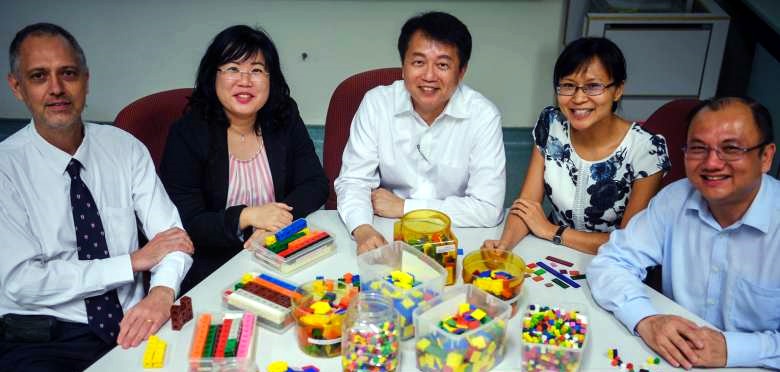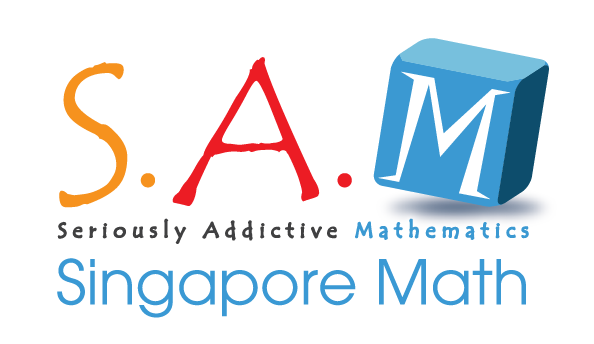NEWS

(From left) Dr Paul Shutler, Dr Dawn Ng, Associate Professor Lee Ngan Hoe, Dr Cheng Lu Pien and Dr Joseph Yeo from NIE, with learning tools used for teaching the Singapore maths model method. They are designing teaching materials for Australia, which will be used to teach mathematics the Singapore way to Grade 5 to 7 students there.
NIE to study how Republic's approach can be better incorporated into foreign curriculum
The Singapore approach to teaching maths has become so popular that "Singapore maths" has become a familiar phrase with teachers and students in at least 14 countries, even as far as South Africa and Chile.
It has produced results too.
Studies in Britain, India and the United States have shown that the test scores of their pupils at the primary school level improve when they are taught mathematics the Singapore way.
But some overseas teachers may face issues in trying to incorporate content from Singapore maths into their own national curriculum. For instance, not all British secondary schools that incorporate Singapore maths adopt customised teaching materials.
So the National Institute of Education (NIE) is embarking on a pilot project to learn how Singapore- style teaching techniques for maths can be better incorporated into a foreign curriculum.
Last September, a team of five academics from NIE's Mathematics and Mathematics Education Academic Group was formed to design teaching materials for Australia. They will be used to teach mathematics the Singapore way to students in Grades 5 to 7 in Australian schools. That is roughly equivalent to Primary 5 to Secondary 1 levels here.
The move is part of a project managed by the Australian Academy of Science (AAS) called the reSolve: Mathematics by Inquiry programme to help students learn mathematics in an innovative and engaging way.
After the pilot, which will involve schools in the states of Victoria and South Australia, the NIE academics will gather feedback, fine- tune the programme and make it available to teachers across Australia's more than 9,000 schools. NIE hopes to complete this in February next year.
The reSolve programme will also train 240 teachers to champion the programme in their schools, and more than 400 schools have expressed their interest.
Another round of trials will be conducted later this year, with more schools in other states.
These resources will cover three units in Australia's national curriculum, and use visual means such as objects, pictures and diagrams to teach concepts. These include the model method, which refers to the use of bar drawings that visually represent quantities.
Associate Professor Lee Ngan Hoe, who is leading the Singapore team of researchers, said overseas teachers "may not know the philosophy and principles behind some methods, so there may be a mismatch in terms of how the (teaching) methods are used".
Emeritus Professor Kaye Stacey, the director of special topics for Australia's reSolve programme, said that while Singapore was chosen as a partner because its approach is "particularly well developed", the Australian team must ascertain the degree to which the resources developed are appropriate for Australian schools and accepted by teachers.
Benefits and issues
Benefits of the Singapore approach to teaching maths:
- Operates according to a "spiral" design, meaning that textbooks are sequential in nature and build on concepts and skills that students have learnt previously.
- A 2015 study found that the pictorial approach was effective when teaching South African learners who have special needs and a language barrier.
- Students are engaged in the process of learning concepts and problem-solving skills, instead of blindly memorising formulas and rules.
Issues when incorporating the Singapore method overseas:
- The fit between the national curriculum and the Singapore approach needs to be considered. In Britain, the pressure on schools to cover a large number of maths topics in the national curriculum each year creates tension with the Singapore maths approach, which emphasises building solid foundations before moving on.
- Some teachers in New Jersey in the US reported that it was difficult to make the transition to Singapore maths, as Singapore's approach is more teacher-driven, slower-paced and goes into greater depth.
- Teachers need professional development and school management teams need to be brought on board to ensure a smooth transition.
- The methods, such as the model approach, can be used only to solve certain topics and problems, and should not be seen as a one-size-fits-all solution to all maths problems.
Read full article here: http://www.straitstimes.com/singapore/education/customising-spore-maths-for-use-in-schools-abroad
For more information visit our Facebook Page
